1978 Opel Monza 3.0E
The Opel Monza lived its life in the shadow of more fancied coupés from Munich, Stuttgart and Coventry, and survival numbers are low. Did it deserve a better fate?
Words CHRIS HOPE
Photography RICHARD GUNN
Was this Opel really refined enough to take on the BMW 6 Series E24
Everyman Executive
Opel’s Monza took on and undercut prestige cars. Did it succeed?
Why more Opel Monzas should have survived
Think quality late-Seventies German coupés and we’d wager BMW’s first-generation 6 Series E24 or maybe a C123 Mercedes-Benz would be at the front of your mind. Perhaps not the Opel Monza, a car so ideologically opposed to its premium rivals from Munich and Stuttgart that it’s understandable why many period commentators wrongly predicted Russelsheim had a winner when the Monza debuted in 1978. Much like the Senator saloon is was based on, the Monza proved to be a slow seller, with 43,812 built over an eight-year run. In the end too few would-be buyers aspired to own an Opel, despite its flagship coupé being a sophisticated executive package.
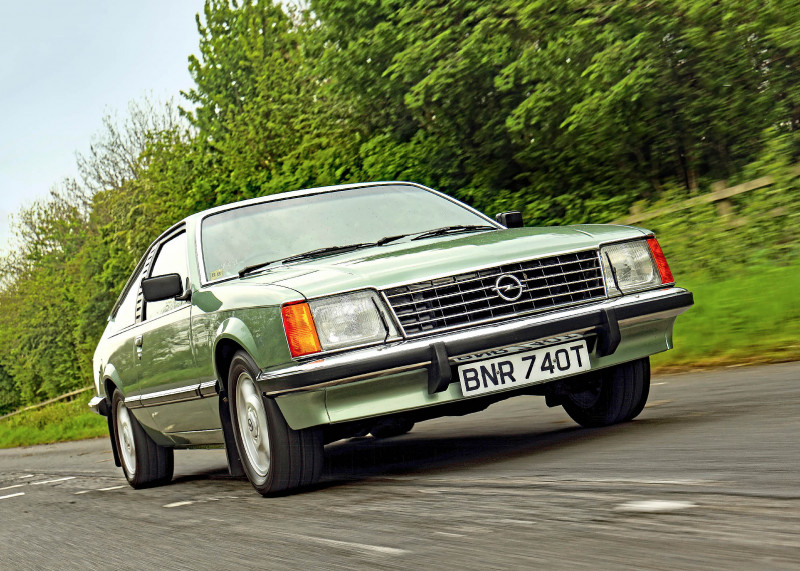
‘In 1977, it was the only large coupé from a volume car marker’
As I open the large driver’s door, I imagine myself in the shoes of a late-Seventies Opel salesman. The lurid green interior would be a conversation-starter, but the modest specification might be a harder sell. Velour seats and door cards, nylon carpets, a dashboard and centre console bearing an uncanny resemblance to its cheaper Opel Rekord stablemate, parsimoniously applied strips of dark wood veneer – and is that an analogue clock? As a buyer, I would’ve wanted the Euro-opulence of a leather-lined cabin, but here there isn’t even a strip of hide lining the steering wheel. First impressions count for much in the car world and the inside of an early Monza would’ve been cause for many middle managers turning on their heels and marching out of Opel’s showrooms. Which is a shame, because a test drive would have given them a different view.
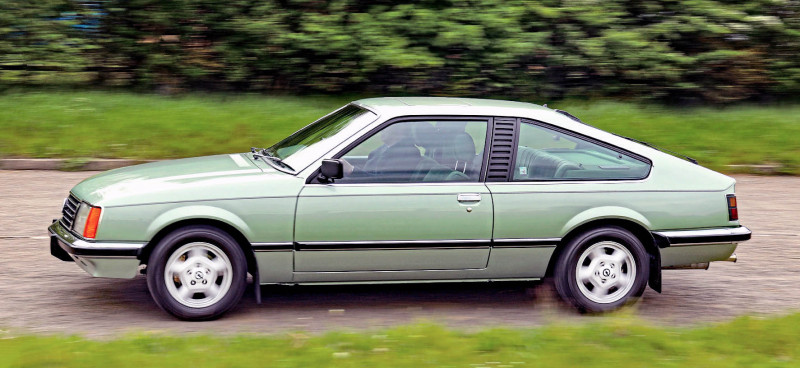
The driver’s seat is well-shaped and easily adjusted to achieve a driving position that’s comfortable and relaxed. Likewise, the controls are all thoughtfully placed. Turn the key and I’m greeted by a murmur as the smooth straight-six awakens. Already nicely warmed through, it quickly settles to a steady idle.
The Opel Monza range comprised 2.8- and 3.0-litre engines with a single twin-choke Solex carburettor, while the 3.0E flagship that I’m driving today was fitted with Bosch L-Jetronic electronic fuel injection. It’s mated to a beefed-up version of the GM-Strasbourg three-speed automatic transmission, but could have been specified with a four-speed Getrag manual gearbox. According to information from car club Autobahnstormers, there are 60 roadworthy Monzas in the UK and this 3.0E model is remarkable even in such rarefied company. It was registered on 1 December, 1978 at Leicester dealer Batchelor Bowles in Aylestone, it is likely the oldest example in the UK – and with less than 27k miles recorded on the clock, it also has fair claim to being the most original.
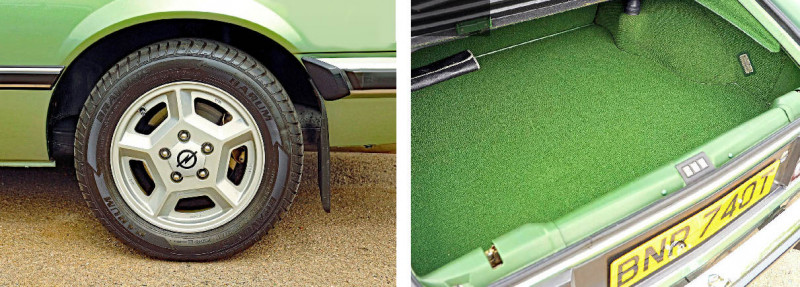
It’s a handsome machine with intentionally corporate styling, penned by in-house designer George Gallion. Its lines are clean and crisp, uncluttered by excessive chrome adornments, and capped off by a grille that’s stark in its simplicity. Its five-slat arrangement is crucial – one of the few visual differences from its closely-related Vauxhall Royale sibling.
Undeterred by Ford’s decision to withdraw from the segment it shared with Opel when production of its first-generation Granada ended in 1977, the Monza was left as the only large coupé produced by a volume car marker. It wasn’t cheap, but within a market segment that also saw it jostling with the five-door Rover SD1 for buyers’ attention, the Monza wasn’t considered expensive, especially in its home market.
The Monza did develop a reputation for being well-equipped, but this followed the introduction of the Series 2 in 1983, including the range-topping GSE, complete with Recaro seats and digital gauges. Within the cabin of this early 3.0E however, mod cons are limited to electric windows– even the door mirrors require manual operation.
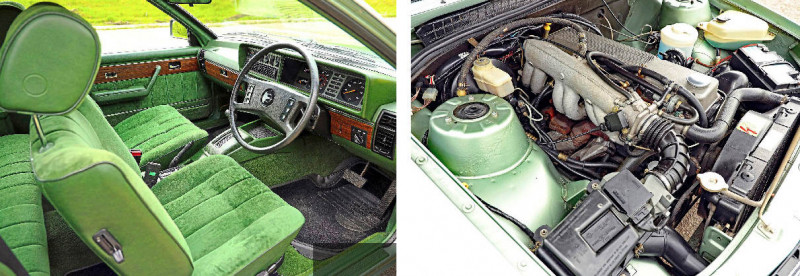
On the move, there’s a feeling of strong and sustained power. Acceleration is swift despite low gearing, while the automatic ’box responds well to pedal-stamping-induced kickdowns. It resists up-changes till 5000rpm; there’s little incentive to push beyond this, as the engine note becomes boomy and coarse. If there is a genuine flaw, it’s the effect of the gearbox on fuel consumption. Later transmission options proved more frugal, with the arrival of the five-speed manual in 1981 as a no-cost option being a real gamechanger. Like that manual, the four-speed auto from later Vauxhall Royales has become an attractive conversion for owners seeking to go further between fuel stops.
The Monza is sufficiently quick. On introduction, the 3.0E was the fastest car Opel had ever produced, and it shares an identical 8.5 second 0-60mph time with the BMW 635CSi E24. But as I join a dual carriageway, it’s the level of refinement that stands out; I quickly find myself travelling faster than intended. The cabin is remarkably silent, with wind noise muffled by chunky rubber door seals, while even the inline six remains well muted by the layers of bulkhead insulation. Opel doubled down by fitting diagonally-mounted hydraulic telescopic engine dampers to further nullify vibrations. The Monza is all about turbine-smooth performance and effortless cruising.
Suspension too has been engineered to be more sophisticated than any of Opel’s previous offerings. The all-independent setup comprises MacPherson struts at the front, with semi-trailing arms at the rear using Opel’s Miniblock springs. Their double conical design takes up less space by offering maximum spring travel for minimum spring depth, along with progressive rates. It’s a combination that gives good control over all kinds of lumps in the road, despite the Monza sitting quite low.
Indicating off onto a slip road and directing the Monza’s snout towards a string of nearby back roads, I’m preparing myself for the drawbacks that such a compliant ride might bring – but I’m surprised to find that it’s remarkably composed. Entering a fast bend, I can feel the weight transfer to the front – but this isn’t at the expense of grip, merely additional weight in the steering as the nose is directed towards the apex. There are limits to how well this 1370kg cruiser can resist roll, but for the most part it tends to lean gently. A good thing too, because the seats on this early Monza lack thick bolsters to keep you pinned on flowing roads.
These minor quibbles are essentially dismissed because of how easily this Monza can be driven fast through corners. It’s so user-friendly that I can appreciate why some might feel this lack of theatre is uninspiring. That the power assistance doesn’t affect the feeling of accuracy in the recirculating-ball steering is a huge plus, though being high-geared, it means the four-spoke wheel feels bigger than necessary.
By the time the Monza arrived, buyers were of the mindset that to get more from their car they needed to spend more. In 1981, a BMW 635CSI Automatic E24 would have set its owner back £19,329, compared to the £14,951 for a Monza 3.0E. Yet it’s a price many were happy to pay. It didn’t matter that the Monza was, in many ways, as good as the BMW – it wasn’t a BMW.
It was a victim of snobbery. The same brand discrimination remained a factor when these cars passed into secondhand ownership; too few saw the value in saving them, which is why Dave Sutton’s 3.0E is so special. Opel withdrew from the UK market entirely in 1988 and by the mid-Nineties any examples left on the road were considered scarce, but hardly exotic. Obscurity was the inevitable conclusion.
As I return the car to its owner, I’m full of praise for the Monza that he’s managed to preserve in show-winning condition. It manages to pair the traditional power of a big-hearted BMW with the security and finessed suspension you’d normally associate with a Mercedes-Benz. That said, it’s clear why the Monza didn’t enjoy greater sales success; it was manufactured by the wrong company.
As a classic though, there’s much to recommend a Monza. If you find one for sale, it isn’t going to worry your bank account too much; with prices for good examples hovering around the £4000 mark, they’re certainly tempting. For an equivalent BMW 6-Series E24, you’re looking at closer to £12k.
As was the case 45 years ago, paying the price premium for badge appeal isn’t exactly good business…
TECHNICAL DATA 1978 Opel Monza 3.0E
- Engine 2968cc, inline six-cylinder, sohc, Bosch L-Jetronic electronic fuel injection
- Max Power 180bhp @ 5800rpm
- Max Torque 179lb ft @ 4800rpm
- Transmission GM-Strasbourg three-speed automatic, rear-wheel drive
- Steering Recirculating ball
- Suspension Front: independent, MacPherson struts, coil springs and telescopic dampers with anti-roll bar. Rear: independent, semi-trailing arms, miniblock coil springs and telescopic dampers with anti-roll bar
- Brakes Servo-assisted discs
- Performance Top speed: 133mph
- Acceleration 0-60mph: 8.5sec
- Weight 1370kg (3020lb)
- Fuel consumption 20mpg
- Cost new £14,951 (in 1981)
- Classic Cars Price Guide £3650-8000
Once an underrated also-ran, today a breath of fresh late-Seventies air. Cabin is a forest of green velour and fake wood Want angles? Monza’s alloys are super-sharp.
Swift progress from 3.0-litre straight six. Enough green baize in boot for a pool table.
Corporate styling features clean, crisp lines.
OWNING AN OPEL MONZA
‘I’ve owned this car twice; once in 1994 and then again when I bought it back six years ago from the same person I sold it to – after about two years of negotiating over the price!’ says Dave Sutton, the owner of this Monza 3.0E.
‘The original owner laid it up owing to ill health, then his son recommissioned it – but soon wanted to move it on as it was proving too expensive to run. I wasn’t especially fond of Opels, but when that same specialist who returned it to the road advised it was for sale, I had to have it based on condition alone.
‘I used it sparingly, but I loved it. In fact, the only reason I got rid of it was because it was being stored in my mother-in-law’s garage which was leaking water.
‘It’s had no major work. The only paint needed was when somebody hit the rear quarter panel in a car park and then I had the front valance and the area around the chrome moulding along the door painted because there were stonechips.
‘It’s been no trouble at all. I haven’t had to find many parts because the previous owner gave me a load of spares. The only things I’ve needed are consumables. Parts for servicing are easy to source, but if anything were to happen to the body it would be very hard to find panel.


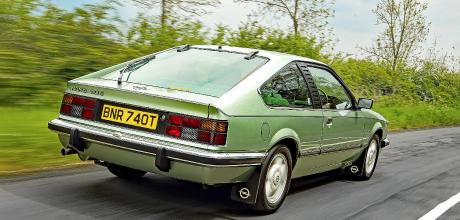
OpelMonza vs. Rover SD1 Vitesse
The March issue brought back memories of a Rover SD1 (‘I knew it was rotten as a pear. It was scrap’) and Opel Monza (Everyman Executive). During the Eighties my friend Brian had a Monza 3.0E with a fivespeed manual and limited-slip differential, which was mainly fitted to the automatics. It was a metallic brown that still looked dirty after spending a whole day washing and Simonizing! I bought it because Brian had his eye on a twin-plenum SD1 Vitesse. At the time, some school buddies and I were keen on skiing – and we had the offer of a flat in Schladming in Austria for two weeks. Somewhere in Germany after quite a few petrol stops, Brian spotted on the map that the next section of the autobahn had a long straight. Soon after we set off from the lunchtime stop my passenger in the Monza dropped off to sleep while Brian accelerated quickly until the SD1 was a dot on the horizon – but not for long. I caught him up, the speedo reading just over 150mph. When we pulled in to top up the tanks, Brian was miffed at being caught up by his old car; my passenger was miffed that he had missed it all.
The Monza did suffer from snobbery; how can a GM car be better than a BMW or Mercedes-Benz? Well, it was. The only annoying thing was central locking that didn’t operate the rear hatch. If you dropped someone off and they had things in the back, you had to switch off and open the hatch with the key. It was one of the best cars I've owned; superbly comfortable and ideal to travel many miles, even off the motorway – and the limited-slip differential kept the tail under control out of wet roundabouts.